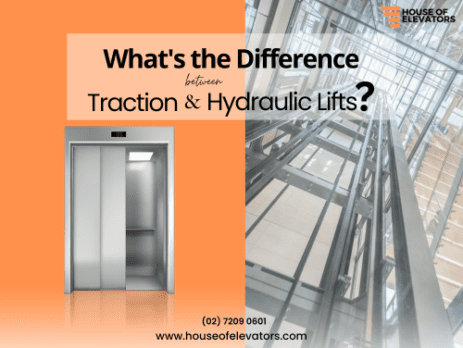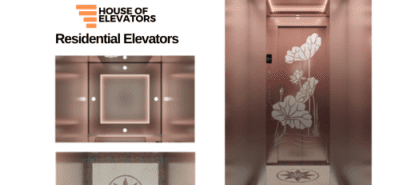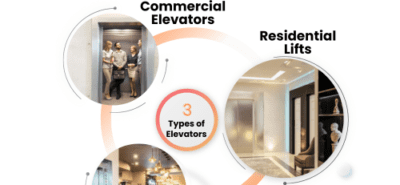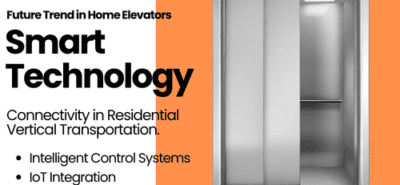What’s the difference between Traction & Hydraulic Lifts?
Difference between Traction and Hydraulic Lifts
Traction and Hydraulic Lifts
Introduction:
Elevators play a crucial role in the vertical transportation of people and goods within buildings. Traction lifts and hydraulic lifts are two widely used elevator systems, each employing distinct mechanisms and offering unique advantages. In this blog post, we will explore the differences between traction and hydraulic lifts, shedding light on their mechanisms, applications, and notable features. By gaining a deeper understanding of these differences, we can better appreciate the suitability of each type of lift in various scenarios.
- Mechanism:
Traction Lifts: Traction lifts operate using ropes or steel cables that are attached to an elevator car and looped around a sheave or pulley system. The sheave is driven by an electric motor, which moves the cables to lift or lower the car. Traction lifts can be categorized as either geared or gearless, depending on the presence of a gearbox. Geared lifts use a gearbox to increase the motor’s torque, while gearless lifts eliminate the need for a gearbox, resulting in a more compact and efficient design.
Hydraulic Lifts: Hydraulic lifts employ a hydraulic mechanism to move the elevator car. These lifts consist of a piston located at the bottom of the elevator shaft, which pushes or pulls the car through the use of hydraulic fluid, typically oil. By controlling the flow of hydraulic fluid, the lift can smoothly ascend or descend. Hydraulic lifts are well-suited for low- to mid-rise buildings and are known for their ability to handle heavier loads.
- Speed and Travel Distance:
Traction Lifts: Traction lifts are generally faster and more suitable for buildings with tall structures and long travel distances. The electric motor-driven system provides higher speeds and efficient acceleration capabilities, making them ideal for high-rise buildings and busy commercial spaces. Traction lifts are designed to transport passengers swiftly and comfortably over multiple floors.
Hydraulic Lifts: Hydraulic lifts are typically slower in comparison to traction lifts and are commonly used in low- to mid-rise buildings. They are better suited for buildings with fewer floors or shorter travel distances. Hydraulic lifts offer excellent load-bearing capacity, making them suitable for transporting heavy goods or accommodating freight elevators. They are commonly found in residential buildings, small commercial establishments, and hospitals.
- Space and Installation:
Traction Lifts: Traction lifts require a dedicated machine room, which houses the electric motor, control systems, and other essential components. Consequently, they require more space for installation. However, advancements in technology have led to the development of machine-room-less (MRL) traction lifts. MRL lifts eliminate the need for a separate machine room by integrating the motor and control systems within the elevator shaft, thus saving valuable space.
Hydraulic Lifts: Hydraulic lifts are known for their space-efficient design. Since they do not require a machine room, they are easier to install in existing buildings or structures with limited space availability. The hydraulic system can be integrated directly into the elevator shaft, making hydraulic lifts a popular choice for retrofitting projects.
- Energy Efficiency:
Traction Lifts: Traction lifts are generally more energy-efficient than hydraulic lifts. Gearless traction lifts, in particular, offer high energy efficiency due to their direct drive system and regenerative braking capabilities. Regenerative braking allows the lift to recover and reuse energy generated during the descent, thereby reducing overall energy consumption.
Hydraulic Lifts: Hydraulic lifts tend to consume more energy compared to traction lifts. Since they rely on hydraulic pressure, constant power is required to maintain the pressure. However, advancements have been made to improve energy efficiency in hydraulic lifts. Features such as standby modes and variable speed drives have been introduced to minimize energy consumption during idle periods.
Conclusion:
Traction and hydraulic lifts each possess their own unique characteristics and are suitable for different building types and applications. Traction lifts excel in high-rise buildings where speed and long travel distances are essential. On the other hand, hydraulic lifts are known for their load-bearing capacity and space efficiency, making them ideal for low- to mid-rise structures and retrofitting projects. Understanding these differences allows us to make informed decisions when selecting the appropriate elevator system for specific building requirements.











